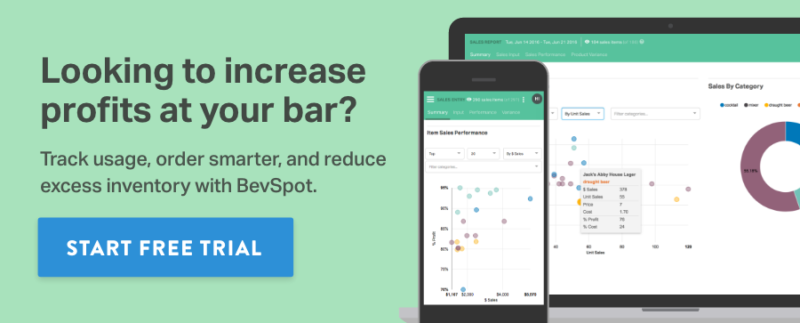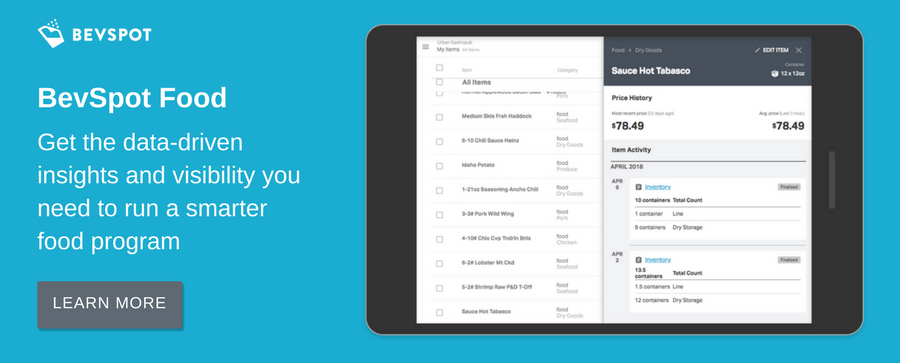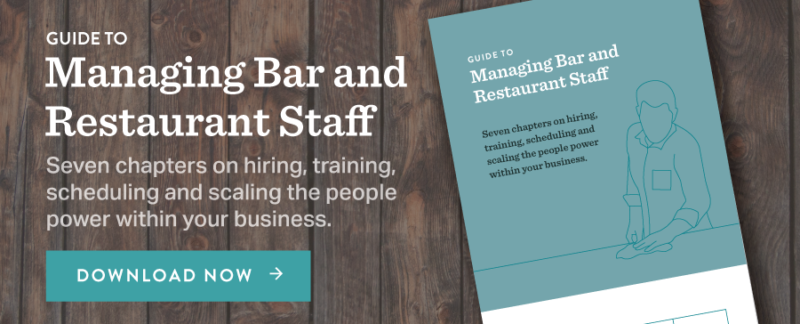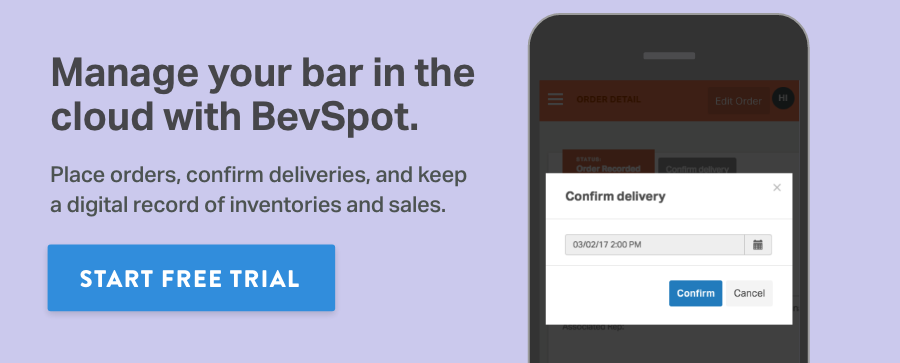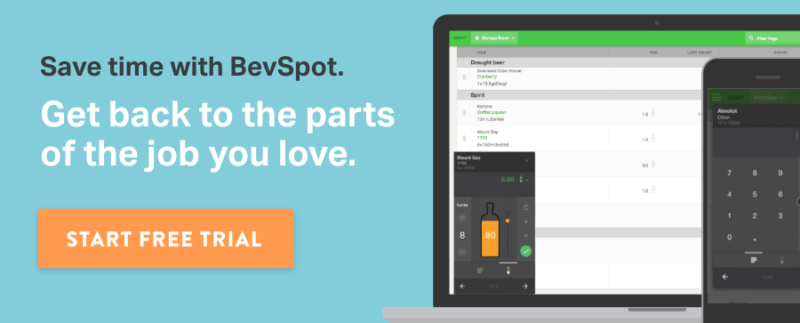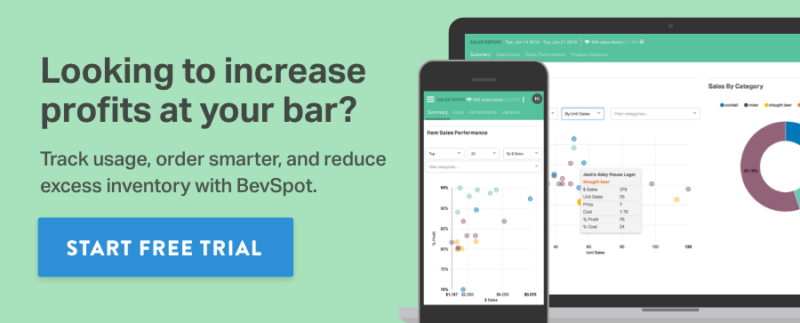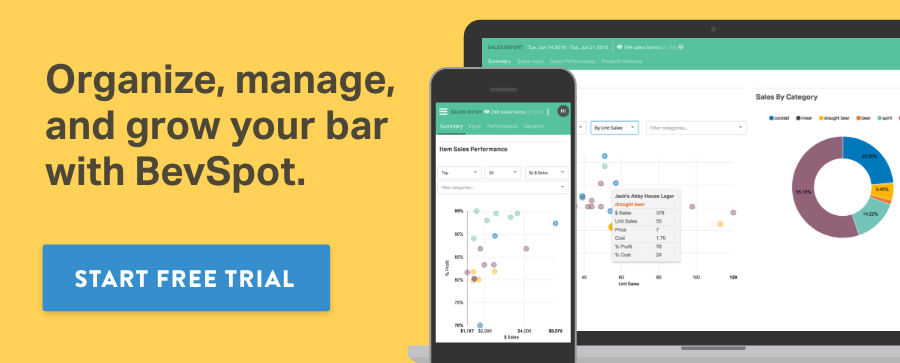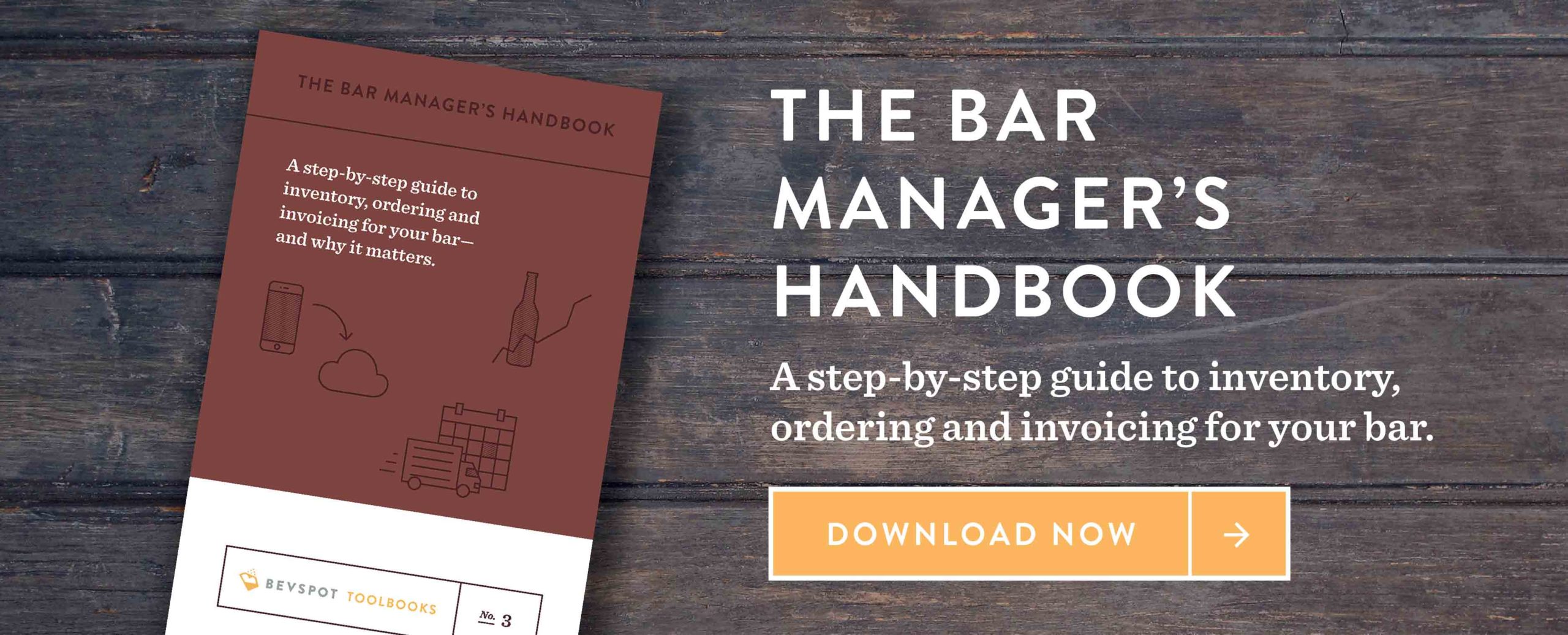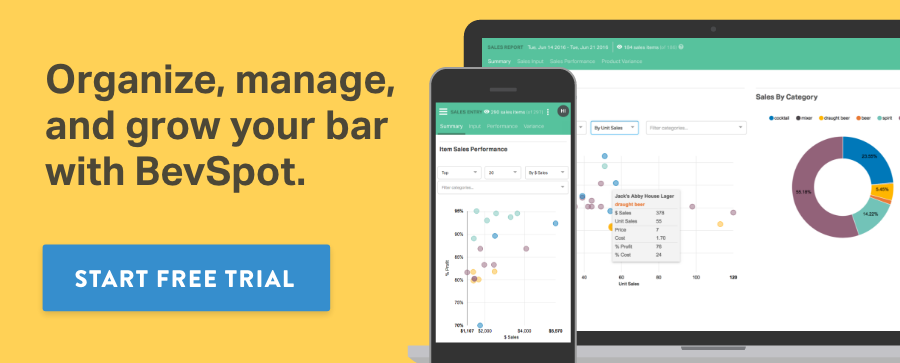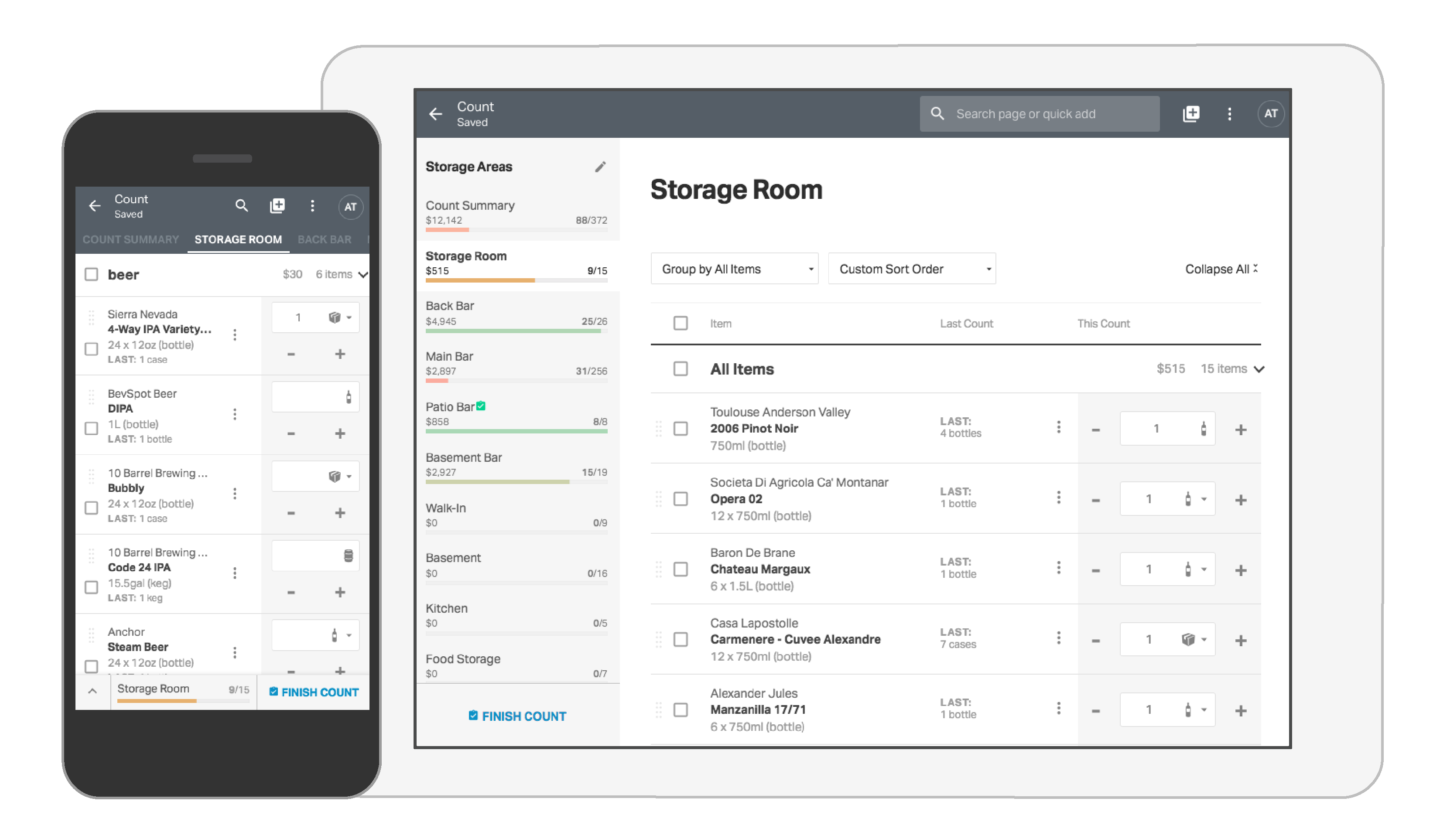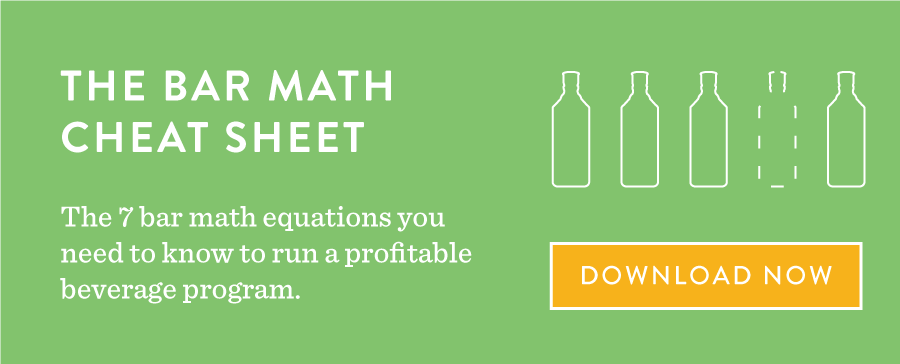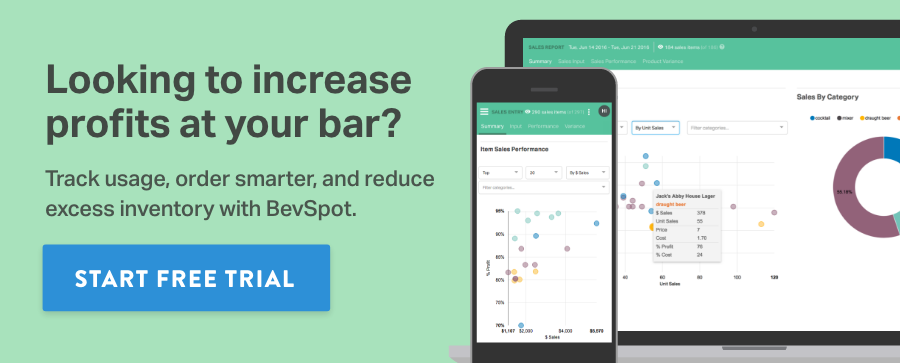Want to Be a Chef Thought Leader? You Need These 4 Traits
What makes a great chef truly great?
They share the same personality traits. While we may disagree on which traits make chefs great, the core ones include: organization, authenticity, creativity, a love of learning, stamina, being a team player, attention to detail, and a love for cooking.
Odds are good that as a professional chef, you possess many of these traits yourself. But, what sets apart Jamie Oliver, Ina Garten, Masaharu Morimoto, Gordon Ramsay, or Emeril Lagasse from other chefs? How do you make the transition from the back of house to front-and-center stage? To be a true chef thought leader, you can stand out from the crowd with a unique blend of authenticity, creativity, drive, and networking.
Chef thought leader trait 1: Authenticity
One of the earliest and most iconic celebrity chefs of all time, Julia Child, stood out quite literally at 6’2” tall with her signature mop of curly red hair. She also broke the barriers of what society expected out of women and their careers. It was embracing her quirks that garnered her attention and acclaim as she made Le Cordon Bleu cooking accessible for the U.S. audience.
With quotes like, “The only time to eat diet food is while you’re waiting for the steak to cook,” and “I enjoy cooking with wine, sometimes I even put it in the food,” Julia’s unabashed authenticity was irresistible to her fans. One quote sums up her mentality perfectly: “The only real stumbling block is fear of failure. In cooking, you’ve got to have a what-the-hell attitude.”
Chef thought leader trait 2: Creativity
We mention it as a key trait earlier, but chef thought leaders take creativity to a whole new level. 27-year-old Amaury Guichon is known for his killer smile and astonishing pastry skills, which he cultivated in Paris’s top establishments beginning at age 16. He now exerts a “planetary influence” on the international pastry scene by emphasizing “surprise and originality in his work.” Technical skills notwithstanding, it’s his boundary-pushing, creative architectural sugar masterpieces that have earned him “Pastry Magician” viral Instagram status and a job at Aria Jean Philippe Patisserie in Las Vegas.
Amaury says in So Good Magazine, “I try to create things that have not been done before. I also like to trick the mind by creating things that look like day-to-day objects, such as a watch, an egg, a compass.”
Chef thought leader trait 3: Drive
Whatever you may think of the food served at his 17 restaurants, Guy Fieri clearly had the drive to distinguish himself as a celebrity chef personality: it’s even part of the title of his hit Food Network show, Diners, Drive-Ins, and Dives. He’s probably stopped at your nearest city to sample the greasy-spoon fare that’s most popular with locals. It can be exhausting being out on the road, trying to charm strangers and meet studio deadlines at the same time. Drive is what inspires you to constantly step beyond your comfort zone when it’s a lot easier to stay within the familiar.
Anthony Bourdain has traveled even further distances in his Travel Channel smash hit No Reservations—from the Italian countryside, to Southeast Asia, to even the Congo. The 61-year-old “bad boy” chef is known for being fearless in both his adventures and his tastings (including bugs and rodents), but staying grounded and humble keeps him motivated. He is quoted as saying, “If anything is good for pounding humility into you permanently, it’s the restaurant business.”
Chef thought leader trait 4: Networking
It’s all about who you know. That’s certainly true when becoming a chef thought leader. Food Network icon Alton Brown was a film student at the University of Georgia and didn’t even touch cooking until his early 30’s when he enrolled in the New England Culinary Institute because he was dissatisfied with the quality of cooking shows on American television. Good Eats debuted on a Chicago PBS television station in 1998 and was picked up by the Food Network a year later. He later used his TV industry connections to successfully bring the Japanese sensation Iron Chef to America, which he hosted and commentated.
Brown mentored up-and-coming chef contestants on The Next Food Network Star alongside Giada De Laurentiis and Bobby Flay, in addition to spearheading several other shows and appearances in countless cameos and commercials. Clearly, a lifelong passion for cooking isn’t a prerequisite to becoming a chef thought leader; being able to charm people with a witty personality and leveraging connections to make things happen is a powerful combination. Brown also knows how to aggregate diverse viewpoints, saying “I think in the end there are only 20 or 30 tenets of basic cooking. It’s going at perhaps the same issue from different angles, from different points of view, from different presentation styles, that really makes things sink in and become embedded.”
It will be up to you to cultivate your own signature flavor, but emphasizing your authenticity, expanding your creativity, maintaining strong drive, and networking successfully is what can take you from being another face in the crowd to a stand-out star and thought leader in the professional chef community.
Schedule 15mins to chat with a product specialist
Start a FREE Trial Today! BevSpot offers full product education and account setup for all customers! No card Information needed!
5 Tips for Getting Started with Menu Engineering
Your bar or restaurant’s way to make and save more money
From the initial idea of a menu item to the guest’s eventual enjoyment of that meal, so much goes into building a menu and its design. When it comes to menus, bars and restaurants need to consider the profit-driving decisions around ingredients and pricing. At the same time, they can’t forget the intangible benefits that design, color scheme, and even wording can have on the brand of the business.
This is where menu engineering—the process of meticulously selecting every aspect of a menu—comes in. The term “menu engineering” is certainly broad, so in this post, we’ll give it a more concrete definition and serve up five ways to get started with menu engineering at your bar or restaurant.
What is menu engineering?
Menu engineering defines the work done on all aspects of your menu—from ingredient selection, to portioning and preparation, to graphic design—in an effort to boost both sales and profit.
Menu engineering can (and does) include the following actions:
- Rewording a menu item to be more descriptive
- Marking a meal, drink, or appetizer as “featured” because you want to sell more of it
- Removing dollar signs from your prices so people will spend more (this actually works, by the way)
- Changing the portion sizes or ingredients of a dish
Since the average restaurant profit margin ranges between 3-5%, these efforts can easily double how much is left on your bottom line.
Let’s look at some quick ways to test out how menu engineering works for your business.
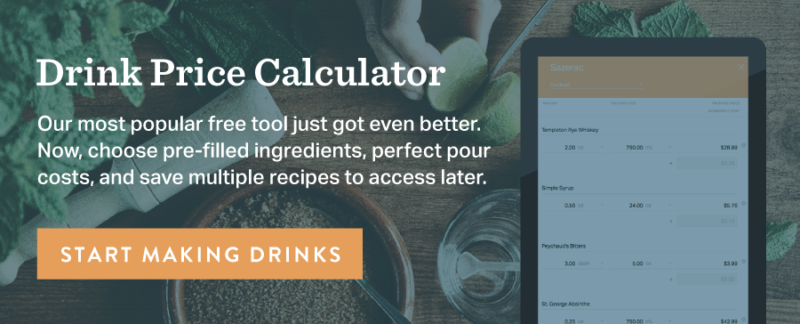
1. Identify your profit-drivers
First off, if you’re brand new to restaurant menu engineering, we suggest not going off of educated guesses for these exercises. To identify profit drivers, it’s helpful to use a menu engineering worksheet to be precise about this information.
Using this sheet will help you break your food and drink items into four different categories.
- Stars: Popular and profitable
- Puzzle: Profitable, but unpopular
- Plowhorse: Popular, but unprofitable
- Dog: Unpopular and unprofitable
Your stars are your key profit drivers, bringing in high sales at high margins. Don’t touch these menu items!
Your puzzles are items you can improve on. You could try moving these up on the menu or lowering their price to increase their popularity, thus turning them into stars.
2. Nix the stragglers
Low-profit menu items that you keep around “just in case” can result in more damage than you realize. First off, less-popular food or drink takes up space in your back of house or on your back bar, which can cause clutter. If these items aren’t purchased frequently, they can easily lose their freshness, losing their appeal even further in your guests’ eyes.
If a drink or menu item isn’t regularly ordered, that can also force the cook to refer to a recipe card—or even worse, they could make the the order wrong. This is far from efficient.
Finally, stragglers deter guests from choosing another (potentially more profitable) item from your menu. In 2017, we saw Chili’s slash 40% of their menu, which cut wait times in half and increased guest satisfaction.
Do your restaurant or bar a favor and ditch those poor-performing menu items. It might not be an easy goodbye, but it’s a necessary one.
3. Have fun with wordplay
According to a study from Cornell, guests are willing to spend almost 10% more on more descriptive menu items. So, break out a thesaurus and get those creative juices flowing. Anything relating to meal prep or some unique adjectives can really raise your menu readers’ eyebrows.
The Gallows does a great job of this, using descriptive words like “crispy,” “soft,” “smoked,” and more. They also call out specific ingredients—it’s not just cheese, it’s fried babybel cheese, and it’s not just an aioli, it’s a sriracha-truffle aioli.
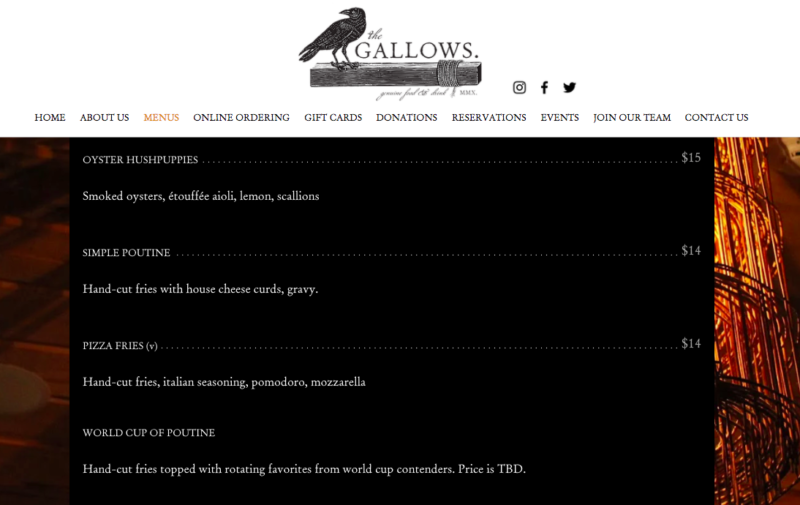
4. Get granular with ingredients
How stringent are you on portioning and ingredient use? Whoever designs your menus should make it clear exactly how much steak goes into a steak and cheese sandwich and how much Captain goes in a rum and coke.
But, don’t stop there. Do all bottles of Corona come with a lime? Does a cheeseburger platter come with a side of ketchup? These ingredients may seem incidental, and in the short term, they definitely are. In the long term, however, these additions and garnishes add up, just the way an extra half ounce of steak on every steak and cheese would add up.
Therefore, this step has two actions items:
- Set menu prices to include markups on any seasonings, sides, or sauces included in the plate or garnishes to the drink
- To follow through with these menu engineering efforts, ensure your bartenders and back-of-house staff are recognizing these portion requirements for everything that goes to a customer’s plate
5. Redesign your guest-facing menus
Once you’ve identified your money-makers and revenue-drainers, gotten more accurate with portioning, and channeled your inner English major with new descriptions, make the changes to your actual menu and print them out for your guests.
If you think it’s worth it, consider consulting a professional designer or an agency to select imagery, font style, and text size that would display your brand.
Menu engineering: Not as hard as it seems
When broken down into actionable steps, the vast field of menu engineering becomes much less intimidating and more like an exciting possibility. With a little grunt work on the numbers and a bit of creativity on wording and design, you can transform your bar or restaurant menu into a profit-driving, guest-delighting, and eye-catching part of your business.
Schedule 15mins to chat with a product specialist
Start a FREE Trial Today! BevSpot offers full product education and account setup for all customers! No card Information needed!
Restaurant Owners: Why “Good Enough” Won’t Cut It
Success in the restaurant industry isn’t easy.
The statistics aren’t pretty. 60% of restaurants don’t make it past their first year and 80% go out of business within five years. Despite the hurdles, many restaurant owners and operators believe that as long as they’re making money, they’re doing “good enough.” The failure in this approach is that it doesn’t account for a universal truth—costs increase.
According to a 2014 IBISWorld report on single location full-service restaurants in the U.S., 67% of a restaurant’s costs go directly to wages and purchase expenses. Additionally, the average profit margin for a restaurant, after removing all other costs, is only 6.2%. With a profit margin this slim, insolvency is unfortunately never far away.
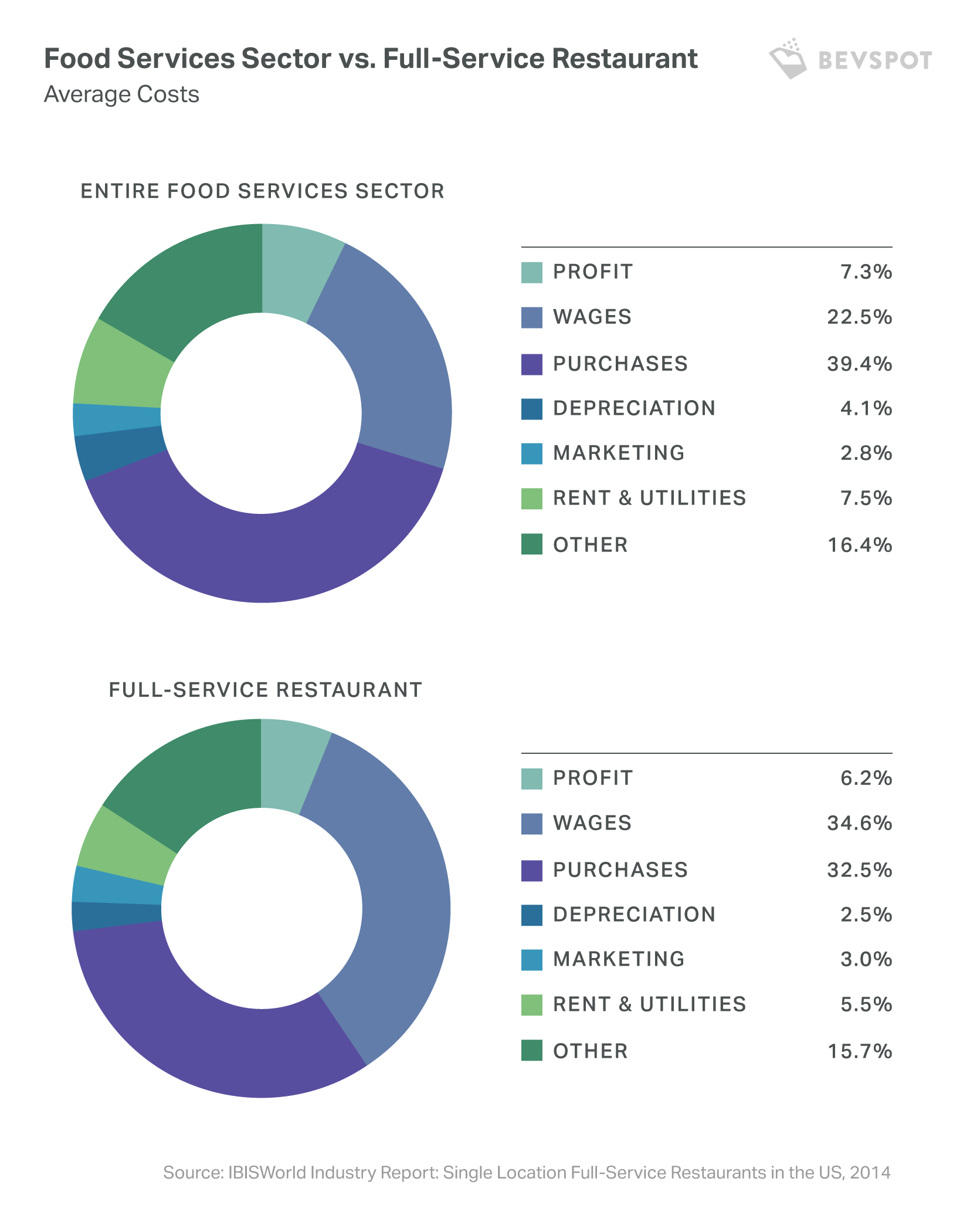
The biggest risk for the restaurant industry is rising wages and increasing food costs. If you’re not constantly working to improve profitability and grow your revenue, the costs will take over. It’s imperative that you’re consistently and actively reducing costs to maintain your current level of success. How can you do this? Improving efficiencies.
More restaurant competition, lower menu prices
Competition in the restaurant industry is at a recent high. In 2016, restaurant location growth reached 1-1.5%, a level we haven’t seen since the early 2000’s. The catalyst of this growth? According to the Jefferies Restaurant 2016 report, independent and chef-driven concepts are adding to the supply in a crowded market.
It’s classic supply and demand economics—the greater the supply, the lower the prices. Competition amongst restaurants in the United States is both driving down menu prices and making it more difficult to increase them. And it’s not just competition from similar concepts. Limited service restaurants (including quick service and fast casual) are one of the fastest growing segments in the food service industry. Sales at these restaurants grew from $160B in 2009 to a forecasted $234B in 2017. The rise in low-cost limited service restaurant sales adds additional pricing pressure on traditional full-service restaurants competing for the same customer.
Restaurant wages are rising
Wages represent a significant portion of your operating costs—34.6% according to IBISWorld—and you can expect that number to increase for a few reasons:
- The national unemployment rate is 4.1%, the lowest level in 10 years
- Minimum wage laws in 18 states and dozens of other cities and counties is increasing payroll costs
- The restaurant turnover rate reached 72.9% in 2016, the highest rate since 2008. To put that into perspective, the private sector annual turnover rate is only 46.1%.
Thanks to the high turnover rate and a record low unemployment rate, it’s becoming harder and harder for restaurant owners to keep people without increasing payroll. If your restaurant is in one of the 18 states with new minimum wage laws, you may already be experiencing the crunch. All of these factors create incredible opportunities for those looking to work in the restaurant industry, but it’s not so great for your bottom line.
You’re paying more for ingredients
32.5% of your restaurants’ costs go towards purchasing the actual food and beverages. We all know how much these costs can fluctuate and how challenging it is to pass the difference on to the customers. Since August 2016, the food producer price index (PPI)—the change in food costs—accelerated by 7.7% according to the February 2018 Credit Suisse Equity Research Restaurant report. In addition, increasing consumer demand for healthier, organic, and local ingredients is putting greater pressure on restaurants than ever before. Those premium dairy, produce, and protein costs add up quickly.
Reduce costs to increase profits: 3 tips from restaurant owners
Based on what we now know about the changing restaurant cost landscape, let’s pretend for a moment.
Assume your menu prices don’t change, food costs increase by 3%, and your wages increase by 4%. You’ll start the year with a 6.2% profit margin and end the year with only a 3.8% profit margin. The price of inaction will set you on a quick path to the “good enough” trap.
In working with thousands of restaurant owners and operators across the industry, I’ve found that the most successful restaurateurs are constantly improving their business and finding opportunities to reduce costs and increase profits. These operators not only stay in business, but go on to open new and successful locations. Here are three best practices I’ve learned from them that can help you avoid falling into the “good enough” trap:
- Hire great people and incorporate profitability bonuses into their compensation structure. Incentives like this will align everyone’s focus on your restaurant’s bottom line.
- Regularly check your ingredient costs, starting with your most-used kitchen and bar ingredients, and update your menu costing to maintain profitability.
- Constantly evaluate new software and service offerings that can save time, increase profitability, and increase efficiency. The most successful operators I work with are constantly looking for an edge and are therefore always evaluating new offerings that might help.
Schedule 15mins to chat with a product specialist
Start a FREE Trial Today! BevSpot offers full product education and account setup for all customers! No card Information needed!
Developing Your Restaurant Concept? Avoid These 7 Common Pitfalls
Is your restaurant’s concept one-dimensional?
Your restaurant concept shouldn’t just be made up of what you put on your walls. Successful restaurants like State Park and Loco Taqueria & Bar were built with the guest’s entire experience in mind. Every aspect of your restaurant, from the food you serve to how your staff speaks to guests, defines your restaurant’s unified theme. Here are seven common mistakes that can break a concept and lead to a messy guest experience.
1. Not deliver what your concept promises
Your theme shouldn’t be just “steakhouse,” “Italian,” or “dive bar.” It’s an all-encompassing statement about who you are and what you offer. That being said, make sure you’re sticking to that message. Every part of your restaurant, whether it be the ambience or menu items, needs to fit your concept.
2. Distracting or dysfunctional restaurant design
There is such a thing as committing too hard to a theme. Is that giant moose head you picked out for your bar going to hit people moving in and out of areas? As you are picking out decor pieces and creating the layout, keep in mind how it will affect the comfort of both your guests and your team.
3. Underutilize your menus
Your decor may be flashy, but your menus do most of the talking. Think through both what your menu includes and how it looks. What kind of language do you use? How are your menus visually designed?
4. Don’t get full buy-in from your team
No one likes reading from scripts! Take the time to train up your team so that they fully understand and get excited about your concept. This creates a genuine, organic experience for your guests and curbs turnover amongst your team.
5. Try to force a concept in an area that won’t buy into it
Assumptions about your neighborhood’s desires, style, and demographic may not be as easy to nail down as you think. Make sure you’re researching, surveying, and adjusting to ensure that you have an excited audience for your restaurant concept.
6. Copy or rip off other successful restaurant concept
Everyone knows the saying, “imitation is the sincerest form of flattery.” That doesn’t mean you should take a concept you like and run the same exact same thing with a different name in a different neighborhood. You need to do more to make it your own, or guests will notice and dismiss its inauthenticity.
7. Force yourself to operate in a concept you don’t believe in
It might be profitable for now, but if you’re not passionate about your concept, the day-to-day operations will eventually wear you down. Your care towards upholding service standards will disintegrate and bring down the concept from the inside out. Make sure that you are just as bought into the concept as you want your staff to be.
Are there any other mistakes that you notice restaurateurs making when developing a new concept? Let us know in the comments.
Schedule 15mins to chat with a product specialist
Start a FREE Trial Today! BevSpot offers full product education and account setup for all customers! No card Information needed!
9 Tips on How to Succeed as a Line Cook
Welcome to the jungle—I mean, the kitchen.
Just as the bartender has their always important barback, an executive or head chef has their line cook. It’s one of the first jobs available in any kitchen and a great learning opportunity for future head chefs. These nine tips will help new line cooks succeed in the kitchen.
Choose the right kitchen
1. Find an environment where you’re learning everyday
In the U.S., 90% of restaurant managers and 80% of restaurant owners started in entry-level positions. Line cooks have the opportunity to pick up a variety of different skills, both in the kitchen and in restaurant management. When searching for a line cook job, prioritize kitchens where you can learn.
2. Pick your head chef carefully
Research the chefs that run the kitchens you want to work in. A good head chef believes in training and educating their staff. Those are the types of chefs who will teach you the most and improve your line cook skills.
3. Understand how your kitchen team operates
Kitchens have a rhythm and internal language all their own. The ability to pick up on the language of your kitchen is a valuable skill that will stay with you from job to job.
Set yourself apart
4. Commit and show you’re willing to do the work
Arriving early for your shift shows that you’re a hard worker and dedicated to keeping the kitchen running smoothly. Don’t let your station get messy and keep your station organized. Make sure you’re also keeping up on necessary kitchen prep.
5. Volunteer for the work no one else will
Volunteering for jobs around the kitchen showcases your drive to learn new things. This can include learning how to create a schedule or taking inventory with a sous chef.
6. Demonstrate your passion and support your team
Bringing energy to your work in the kitchen shows that you care about the kitchen and the process. Be that person who lifts up your co-workers and be a leader in the kitchen.
7. Take time to teach others around you
As you gain more experience, use your newfound knowledge to teach new line cooks around you. Not only will this strengthen your team, but it will demonstrate mastery and leadership in the kitchen.
Take care of yourself
8. Find time to exercise
Line cooks often are on their feet for over ten hours per day. You’ll be asked to lift heavy boxes of supplies and work in a cramped space surrounded by fire and knives. For a job this physically demanding, staying fit and nimble is essential.
9. Get enough sleep
As a new line cook, you’ll be learning a lot of new things in a stressful environment. Make sure you’re getting enough sleep to help you stay focused on what you need to do during each shift.
A well-trained line cook is the backbone of every successful restaurant. It’s your responsibility to maintain and fulfill the executive chef’s standards and vision in a demanding environment. But, it’s also an opportunity to learn while working your way up in the kitchen.
Schedule 15mins to chat with a product specialist
Start a FREE Trial Today! BevSpot offers full product education and account setup for all customers! No card Information needed!
How To Calculate Food Cost at Your Restaurant
Being able to accurately measure food costs is essential for running a profitable restaurant.
If you’re not careful, food costs can cripple your business. Measuring your costs correctly will give you a true health score for your restaurant. We’ll walk you through a high-level overview of food cost calculations, why they are so important, and how to use them.
Direct and indirect food costs
In any restaurant, there are many sides of the “food costs” coin to keep in mind:
-
- Direct costs: The actual cost of the food itself, broken down into ingredients, usage, and waste
- Indirect costs: The behind-the-scenes costs of running a restaurant, such as overhead and labor
- Recipe cost: Cost of all ingredients in an individual portion of food, or the entire dish
- Menu sale price: What a customer pays for a final composed dish
- Ideal food cost: Recipe cost divided by total sales
- Actual food cost: Ideal food cost minus any food inventory lost
Each of these components must be taken into account and measured consistently to manage food costs accurately. Even slight discrepancies can snowball over time and impact your restaurant’s profitability more dramatically than you might expect.
How to calculate food costs: Ideal and actual costs
The National Restaurant Association recommends that total food costs should equal 33% of menu prices. This can vary by meal. For instance, food costs for breakfast could be 25% or less, lunch might be 30% or less, and dinner may be 35% or less. While each restaurant is different, the most basic formula for calculating ideal food cost is:
Total ingredient cost (recipe) ÷ Menu sale price = Ideal food cost
Another way of phrasing this is:
Net food purchase ÷ Net food sale = Ideal food cost percentage
Of course, it’s a lot more complex than that. You have to break down the quantity of every ingredient into its appropriate portion size (fraction) for each menu item containing it, and then divide the overall cost of the ingredient purchased by its corresponding portion required for each dish.
This is where reality sets in. Over-portioning, waste, and spillage makes measuring ideal food costs difficult. To get even more detail, calculate your actual food cost:
Beginninghttps://bevspot.com/2018/09/26/qa-what-is-the-formula-used-to-calculate-food-cost/ inventory + Purchases – Ending inventory / Total food sales = Actual food cost
In a perfect world, your ideal food cost and actual food cost percentages should be as close as possible.
Take a look at your numbers. What’s the difference between your ideal and actual food costs? If your ideal food cost is 25% and your actual cost is 33%, there’s an issue. Either you’re over-portioning, wasting product, or an ingredient suddenly got more expensive. This is why taking accurate, consistent kitchen inventory is so important. Without these numbers, it’s impossible to know how much you’re actually using—or wasting—each day.
The importance of staying consistent
It can’t be overemphasized; consistency is key. If one chef measures out their portions slightly differently from the next, that extra dollop of sauce adds up on busy nights and will skew your numbers. Not only does inconsistency make your budgeting and ordering challenging, but it also affects the quality of your food and your guests’ overall experience.
Getting control of your food costs will give you more time to focus on service, promotion, menu creativity, and upgrades to your business.
or Schedule a free consultation with one of our product specialist!
Food Inventory Management Made Simple: Introducing BevSpot Food
It’s a question we’ve heard time and time again: When are you going to develop BevSpot for food?
We’re excited to announce that we have an answer to that question. Today, we are introducing BevSpot Food, a comprehensive software solution for food inventory management. Bars, restaurants, hotels, and hospitality groups of all sizes now have an easy-to-use solution to simplify and manage their food program operations.
BevSpot Food: Take fast, accurate inventory
Just like its beverage predecessor, BevSpot Food allows users to take fast, collaborative kitchen inventory on any device.
Editable storage areas makes it easy to organize your BevSpot account to reflect your establishment’s setup. Quickly move from the line, to the walk-in, to the dry storage as you count using the Inventory Calculator—a feature BevSpot Beverage customers know and love. Since what you order isn’t always what you finally count, BevSpot’s flexible units keeps your data accurate. This is especially useful for kitchens that order fish by the pound, but inventory by the filet.
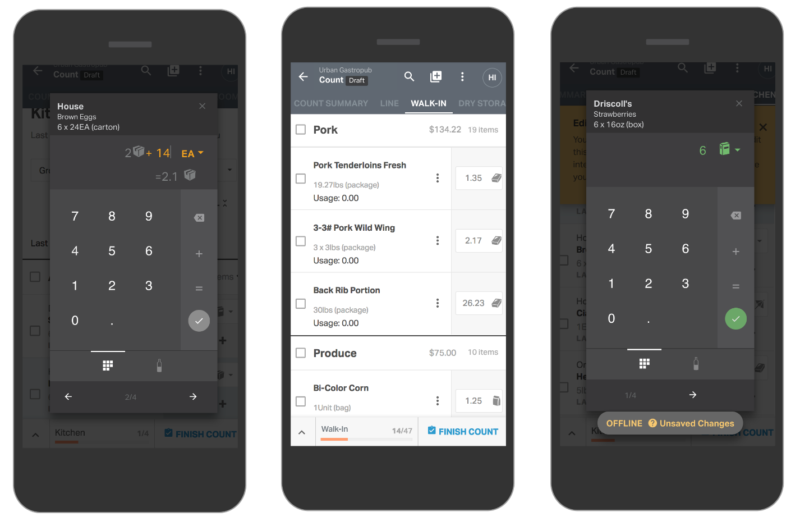
BevSpot Food: Organize and centralize your record-keeping
During the product discovery process, many customers explained how difficult it is to keep track of invoices. Multiple orders per day from multiple vendors quickly becomes a bookkeeping nightmare.
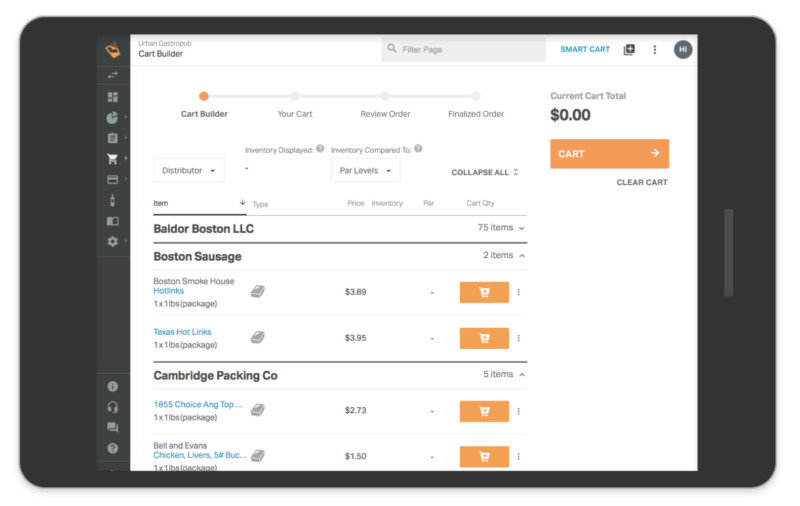
Not only can you place vendor orders directly through BevSpot Food, but you can catalog past invoices, regardless of how you placed the order. Then reconcile your purchases against your BevSpot invoices to make sure you’re really getting what you paid for.
As you add more product to your account, BevSpot keeps a detailed history of every item in your kitchen, from price changes to recorded inventory counts.
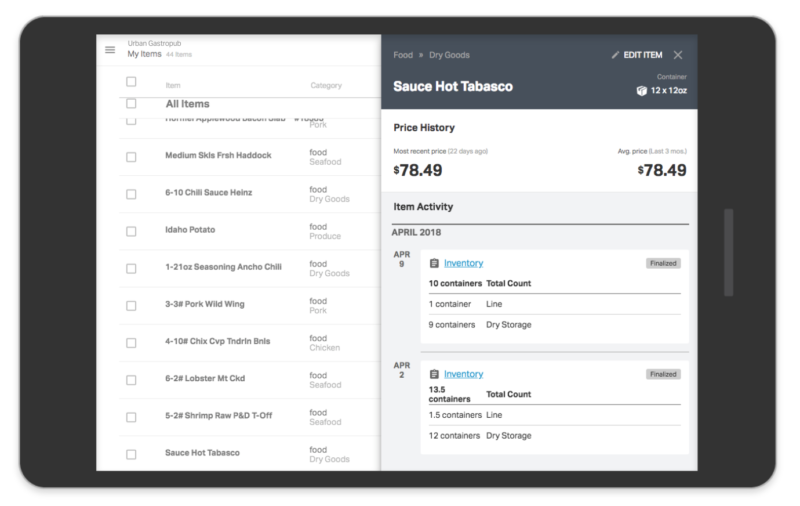
BevSpot Food: Make informed, data-driven decisions
You know the cost of everything that comes out of your kitchen. But, do you know where you’re losing money? Detailed Usage, Loss, and Sales Performance reports tell you what’s sitting on the shelves and where you’re losing money. We aim to arm you with as much data about your food program as possible, because smart (and profitable) decisions are data-driven decisions.

What’s next?
Since we’re a software company, our work is never done. As customers start using BevSpot Food, we will continue to develop new features, improve existing ones, and seek direct customer feedback.
Want to manage your food program with BevSpot?
Start your free FREE trial now.
or
Our Next Chapter: Introducing BevSpot Food Management Software
Introducing BevSpot Food
When we launched BevSpot in 2014, we made it our mission to empower the global food and beverage industry with technology. From pushing software updates on-site at local Boston bars, to having thousands of customers worldwide using our beverage management software, I’m extremely proud of how far our team has come.
Today, we’re taking the next step toward fulfilling our mission. We are excited to introduce BevSpot Food. This new solution helps bars, restaurants, hotels, and groups take control of their inventory, purchasing, and sales performance for their kitchens. More importantly, with this addition to our product suite, BevSpot can now provide the industry with an all-in-one food and beverage management software.
Working closely with our customers, I’ve seen first-hand how time-consuming and tedious managing a food operation can be. Food programs are simply far more nuanced than beverage, yet they represent over 70% of revenue for many restaurants. Our customers needed a solution that would save them time, increase efficiency, and boost profitability.
You spoke, we listened
Over the last few quarters, we’ve gone back to our roots. We sat with our customers in their kitchens, listening to their challenges, and recording their feedback. During our beta testing phase for BevSpot Food, we iterated on the product on a daily basis. It was common to see our product team meeting with customers in our office, listening as they walked us through what they liked about the software, what wasn’t working, and what they really needed.
We wanted to build a food management software that could handle every aspect of a food operation—from purchasing and vendor management, to tracking flexible units for inventory and usage. We wanted to get it right.
As we start this new chapter at BevSpot, we know that the work has just begun. We’re focused on continuing to improve BevSpot Beverage and further innovate on BevSpot Food. I know I speak for the entire team when I say we’re extremely excited to see where our mission takes us, and where it takes our customers.
Schedule 15mins to chat with a product specialist
Start a FREE Trial Today! BevSpot offers full product education and account setup for all customers! No card Information needed!
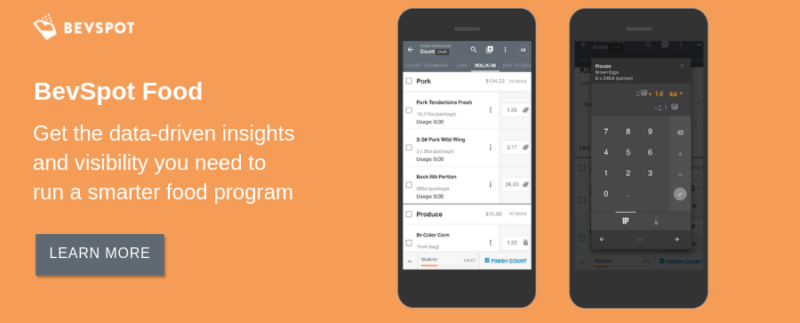
Press Release: BevSpot Expands to Food Program Management Software
Simplifying inventory, purchasing, and insights for food programs
Boston, MA – BevSpot, one of the leading technology companies in the global food and beverage industry, announced today the launch of its new food program management software. This latest addition to BevSpot’s product suite provides bars, restaurants, hotels, and hospitality groups a comprehensive solution to simplify and manage their food program operations.
Unlike other platforms that require in-person setup, BevSpot’s cloud-based software enables users to easily and immediately access day-to-day records and key business health metrics. BevSpot’s all-in-one food and beverage management software provides a simple solution for managing day-to-day operations and increasing visibility, efficiency, and profitability.
“Our mission is to empower the global food and beverage industry with technology. With this new product, we aim to provide businesses of all sizes—from restaurants and bars, to hotels and management groups—a full-service technology option to help them take control of their entire food and beverage operation.” said Rory Crawford, CEO and Co-Founder of BevSpot.
According to a study by Cornell University, 26% of hospitality facilities fail in their first year and 59% fail in three years. While failure rates for small, independent operations is higher at 27% in year one, multi-unit operations are not far behind at 24%. To stay open, it’s necessary to focus on minimizing costs, creating unique guest experiences, and understanding trends.
“For many of our clients, their food programs contribute to over 70% of their overall revenue,” said Chidubem Ezeaka, BevSpot’s Co-founder and Chief Product Engineer. “We knew it was vital for them to manage, monitor, and track their food programs, so we made it possible in BevSpot. Whether it’s managing your inventory or understanding your spoilage, we’ve developed a solution that can work for anyone, anywhere in the world, that wants to move their kitchen data online.”
To stay open and profitable, single establishments and multi-location groups must focus on their return on investments. “It’s simply not enough to just break even,” said Ashley Rouse, VP of Sales. “Our customers need to succeed in a competitive market. To do that, they need to know that they’re investing in a software that helps them secure both short-term success and long-term growth.”
In a time where digital technology is the norm, the food and beverage industry still relies heavily on spreadsheets and clipboards. BevSpot helps food and beverage industry professionals easily transition from pen-and-paper to cloud-based software. By digitizing their inventory, purchasing, and sales data, BevSpot helps users gain valuable insights to improve their bottom line.
About BevSpot
BevSpot builds easy-to-use online technology solutions for the global food and beverage industry. Through BevSpot’s food and beverage management software, customers can take control of their entire operation—from the bar to kitchen—on any device, all saved to the cloud. Today, BevSpot has empowered thousands of users worldwide to make data-driven decisions and grow their business.
To learn more, visit bevspot.com.
Press Contact
Neha Singh
Director of Marketing
press@bevspot.com
10 Essential Online Resources for Professional Chefs
Where do professional chefs go online to get inspired?
Countless websites offer unique recipes, educational insight into rare product, and spotlights on new culinary trends. However, these sites are often meant for the home cook. If you’re tired of sifting through the online noise to find something more your speed, check out these 10 online chef resources for industry pros.
Start Your Free Trial With Bevspot Today!
Chef resources: Business and career
1. Chef’s Resources
Chef’s Resources is an excellent site for industry professionals concerned with kitchen management, basic ingredients knowledge, accounting, and more. Although some content is reserved for subscribers only, there are many excellent recipe templates, food cost calculation forms, prep sheet charts, and other digital tools available completely for free.
2. The Staff Canteen
The Staff Canteen has been serving chefs information about jobs, career advice, suppliers, and recipes for a decade. The curated, contributor-driven content encourages networking. The site’s YouTube channel also regularly features demonstrations from Michelin star chefs.
Chef resources: Education
3. American Culinary Federation
The American Culinary Federation (ACF) claims to set “The Standard of Excellence for Chefs.” The ACF is all about recognizing and upholding excellence in the culinary profession, and will help you find quality educational programs if needed.
4. Escoffier On Line
1995 may seem prehistoric in internet years, but Escoffier On Line (EOL) is no dinosaur. EOL has spent the past thirty years compiling a vast amount of information about all things related to working as a professional chef, including topics like restaurant design, food business, front of the house, and more.
5. Chef2Chef
If you’re just starting out in your professional chef career, or if you’re looking to find additional training, Chef2Chef is an excellent place to start. They have a database of culinary schools searchable by region, program, degree, and even campus type, so that you can find the best options. In addition, Chef2Chef compiles useful industry statistics, a student blog, how-to career guides, and more.
Chef resources: Social networking communities
6. Chef’s Roll
With well over 300,000 Facebook likes and followers, Chef’s Roll has taken big strides towards accomplishing its goal of “building the largest chef network in the world, where culinary professionals promote their talent and career achievements, and tell their entire culinary story.” Plenty of instructional videos offer up educational eye-candy. The site is updated almost daily and attracts plenty of international community engagement.
7. World Association of Chefs Societies
Not to be outdone, the World Association of Chefs Societies website brings together global culinary professionals for clubs, challenges, charity, certifications, and other forms of education and networking. They have their own magazine, job board, and even host events around the world to meet up and engage in-person, like the upcoming WorldChefs Congress & Expo 2018 in Kuala Lumpur, Malaysia. They’ve even created their own chefs-only online social network called myCHEFSPACE.
8. Chef Talk
If the more traditional, no-frills message forum format is more your speed, you’ll love Chef Talk. This online forum bills itself as “a food lover’s link to professional chefs.” Topics include post-culinary school career options, job burnout, cooking techniques, and other topics related to restaurant management. The forums are fully searchable, and if you don’t find what you’re looking for, you can always start a new thread.
Chef resources: Inspiration from the world’s best
9. StarChefs
Since 1995, StarChefs magazine has chronicled and supported restaurant industry professionals. While it started as a glossy print publication, it also has an elegant, functional website to match. If you enjoy beautiful images and staying up to date on the latest industry information, you’ll want to keep tabs on StarChefs.
10. Culinary Trends
Get your creative juices flowing and check out Culinary Trends, an online and print publication delivering “inspiration for executive chefs.” Founded 18 years ago as a subscription-only magazine, it was originally intended for executive chefs “to be inspired by each others’ recipes.” Now, you can browse these recipes and other content on their website.
Did we miss your favorite site? Share it in the comment section!
Schedule 15mins to chat with a product specialist
Start a FREE Trial Today! BevSpot offers full product education and account setup for all customers! No card Information needed!
Bar Inventory: Order More Productively with Smart Cart
Are you ordering too much bar inventory?
At BevSpot, we often run into bar owners and managers who suffer from “FORO,” or fear of running out. This fear usually stems from a lot of guesswork, influencing their bar inventory and ordering decisions. They order too much and end up needlessly sitting on a lot of extra products–costing them capital that could be used elsewhere.
With BevSpot, bar owners and managers use real-time data to make wiser ordering decisions. BevSpot’s Smart Cart feature helps reduce an establishment’s sitting bar inventory, while eliminating the fear of running out of product.
Here is how BevSpot’s Smart Cart feature works:
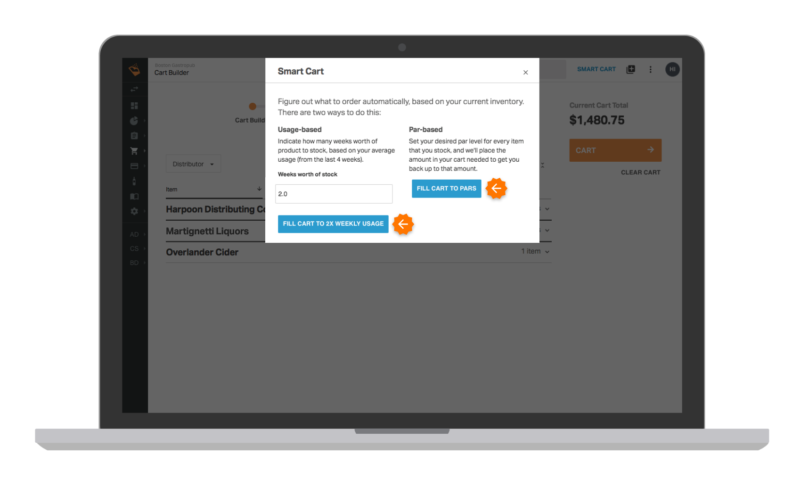
- Smart Cart automatically puts together orders for you based on your actual weekly inventory usage or par numbers in BevSpot.
- If you base your Smart Cart order off of the par levels set in BevSpot, it will fill the cart with the products you actually need to get back to your par level.
- If you prefer to base your Smart Cart order off of usage, the system will look at your average weekly usage and populate the cart based on how many week’s worth of usage you want. (We suggest 2-3 weeks average usage as a good benchmark.)
- After Smart Cart populates your order, you can adjust quantities if need be.
The best part about BevSpot’s Smart Cart feature is that it doesn’t require you to do anything fundamentally different. All you have to do is click on the Smart Cart button on the Cart Builder page and decide if you would like to order based on usage or pars. Once you decide, you can review the information and, at the very least, gain some immediate insights into your ordering habits that would have been difficult to find otherwise.
For example, after using BevSpot, co-owner Stephen Julia of Curio discovered they weren’t even keeping a week’s worth of inventory. This discovery enabled them to confidently push their pars to their appropriate levels.
We know that nobody gets into the bar and restaurant industry to take bar inventory or reconcile orders. By using BevSpot’s Smart Cart effectively, you’ll spend less on bottles collecting dust and unlock more money to reinvest.
Schedule 15mins to chat with a product specialist
Start a FREE Trial Today! BevSpot offers full product education and account setup for all customers!
Webinar: 4 Easy Ways to Boost Profits at Your Bar or Restaurant
How do you cut costs and increase sales for your bar or restaurant?
Back in February, we co-hosted a webinar alongside Main Street Hub on boosting profits for restaurants and bars. In the webinar, we discussed business tactics around understanding the vital metrics of your business, utilizing social media to increase visits to your establishment, and more!
In case you missed it or want to rewatch the webinar, you can find the full recording here.
Food Safety Temperatures 101: How to Avoid the Danger Zone
It’s a fundamental restaurant rule: your food shouldn’t make people sick.
There are exact food safety temperature standards that determine what makes food done, safe, or inedible. Your establishment’s local public health and food safety office probably gave you strict food safety guidelines for your restaurant. But, honestly, we could could all use a refresher on those standards before the next inspection.
Let’s go through a primer on food temperature safety, proper procedure, and best practices to reduce restaurant inventory waste.
Avoiding the food safety “danger zone”
Prepared food has to be kept at precise temperatures to remain safe.
- Cold foods must remain at 41° Fahrenheit or below
- Hot or reheated foods must remain at a minimum of 135° Fahrenheit, depending on the food item
For safety (and humanity’s love of round numbers), most guidelines accept temperatures of below 40° or above 140° Fahrenheit.
Any temperature in between those two numbers is known as the “danger zone.” This danger zone is an ideal environment for bacterial growth. Of course, food will always pass through this zone during the cooking or freezing process, but limited exposure is generally safe. Two hours is the absolute maximum food can live in this zone before it’s officially considered inedible. It only takes minutes for bacteria to start growing, so less time is always better.
4 important food safety temperature tips to remember
In a busy kitchen, it’s easy to lose track of how long something has been in the danger zone. A few minutes here and there add up, so vigilance is key. Here are a few food safety tips to remember so you can avoid foodborne illness in the kitchen:
- Heat lamps and steam tables keep food warm, but don’t heat it. Make sure food is properly heated before going into prep, or well intentioned moves will keep food in the danger zone, rendering it inedible.
- Food that’s “done” often refers to aesthetics and color. But, if it doesn’t measure up to temperature standards, it isn’t safe. Measure temperatures regularly and don’t just rely on visual cues.
- Safe temperatures for hot food varies: 145 °F for beef, pork, veal, steak, or chops 160 °F for egg dishes and ground meat. 165 °F for poultry, combined dishes such as casseroles, and anything that needs to be reheated.
- One of the most common causes of bacteria growth and contamination is improper cooling. Food needs to be placed in shallow containers and cooled to below 40 °F in less than two hours.
How to create temperature logs
While not difficult, keeping track of food and cooling temperatures needs to be done on time, in regular intervals, and in a way that’s easy to check. At every point in your kitchen and walk-in’s that requires temp checks, have a log on hand. Your fridges and freezers should each have their own thermometer. You should also have several food thermometers for food you’re currently cooking, food that’s kept hot, and food kept cold.
Check your food every two hours and log that data where you can reference it later. Standardized sheets are available online, or you can customize your own in Word or Excel. At the very least, the log should record:
- Date
- Time
- Recorded temperature
- Type of food
- Employee initials
- Action taken to correct temperature (if necessary)
With your temperature records readily available, anyone can make sure your food is safe. It’s a quick and simple way to ensure every plate of food meets local and federal safety standards.
Schedule 15mins to chat with a product specialist
Start a FREE Trial Today! BevSpot offers full product education and account setup for all customers! No card Information needed!
4 Reasons Why You Need to Network in The Hospitality Industry
Want to make hospitality your career? Network, network, network.
When it comes to advancing your hospitality career, it’s not just about how you handle yourself during a shift, but it’s also about who you interact with. Our industry is unique because the best chefs, bartenders, and ambassadors are often within arm’s reach. Whether you’re sitting across a bar from each other or mingling at the latest liquor release party, if you are looking to move up in the hospitality industry, here are four reasons why you need to start hospitality networking.
1. Educating yourself
It’s easy to feel lost or overwhelmed when you’re just entering the industry. Your coworkers and others in the industry will help you get up to speed and help you advance your technical skills. Even if you are the most seasoned, knowledgeable person behind the stick, there will always be someone that can teach you a new technique or offer new information about a product. Meeting fellow hospitality industry professionals and learning more about their perspective can give you that creative spark to pursue something further.
2. Getting to know the neighborhood
Going out to other local bars and restaurants not only gives you a better idea of what’s trending around you, but it can give you a deeper insight into your local clientele. Go explore your surroundings, get to know fellow industry pros, and keep an eye out for industry events. These events are a perfect opportunity to rub shoulders and learn what makes your local hub special.
3. Establishing future career options and stability
What’s incredible about this industry is that, once you make connections, they’ll take you far and wide. For me, being a member of the United States Bartender’s Guild (USBG) helped me stay connected in the industry even when I was moving. I left Portland, OR for Boston and quickly landed a job in Boston less than a week after I moved thanks to my active membership. You also don’t have to be the biggest social butterfly or social media nerd, but it doesn’t hurt when it comes to staying in touch and in the know.
4. Giving back to the industry
As much as you might get from networking, it’s just as important to give back. That can take many forms, whether it be mentorship or volunteering. Four years ago, I began volunteering for events all over the place. Not only did I gain more industry connections and mentorship through that, but I was able to help others do the same.
Be yourself to build your community
Some of you might be wondering how to handle yourself when hospitality networking. The best way to get involved is to be yourself! It’s okay to be the quieter, cocktail-minded bartender, as well as the loud, dive bar slinger. Your interesting identity is what makes you a unique member of the bar and restaurant industry.
You can’t make it in any industry on your own—let others be part of your journey, and be part of theirs.
Schedule 15mins to chat with a product specialist
Start a FREE Trial Today! BevSpot offers full product education and account setup for all customers! No card Information needed!
5 Must-Have Bitters You Need in Your Cocktail Bar
Did you know that people used bitters as far back as the days of Ancient Egypt?
Originally used as a preventative or healing treatment, bitters have been used throughout time to augment cocktails and alcohol of all kinds. Thanks to today’s booming craft cocktail renaissance, bitters are behind every bar in the world. But, with so many varieties to choose from, how do you decide what you really need? Here are five must-have bitters to have in your bar inventory and find out how BevSpot can help improve your business!
Start Your Free Trial With Bevspot Today!
1. Angostura Aromatic
Named for a town in Venezuela, Angostura aromatic bitters have been in production for nearly 200 years. Originally developed as a curative for soldiers in Simon Bolivar’s army, these bitters are strong and pair well with a wide array of spirits—from vodka, to gin, to whiskey. For those that like a truly bitter drink, especially something featuring the likes of Fernet Branca, Angostura can also be the feature flavor in a cocktail, as opposed to merely accenting a more traditional spirit like those previously listed.
2. Peychaud’s
Slightly sweeter and more floral, Peychaud’s will work with all the same spirits as Angostura, but it will bring out different aspects of the drink. The fruit behind Peychaud’s flavors works as a wonderful contrast to drinks who put whiskey or rye forward, and complements anything made with gin, mezcal, or tequila. The powerful red color also creates a distinct look.
3. Regan’s Orange
Along with Angostura Aromatic and Peychaud’s, Regan’s Orange Bitters No. 6 is the third member of the “Holy Trinity of Bitters.” A sweet citrus that goes with pretty much everything, orange bitters are like a swiss army knife in a bartender’s belt. There’s very little we won’t throw these excellent bitters into.
4. The Bitter Truth
The Bitter Truth bitters boasts a range of available bitters from aromatic to citrus to grapefruit. They all have an edge and pronounced bitterness that’s definitely for those that prefer a kick. For those that truly love the digestif way of life, Bitter Truth offers an extreme measure for those that like something stronger.
5. Bittermens
Bittermens does things a little differently. Sure, they offer the standard bitters you’d expect, but their exotic bitters really shine. Several varieties of chocolate, pecan-vanilla, melon, nut, habanero, and chamomile are just some of the flavors they bring to the bar. Assuming you’ve stocked your bar with the old classics above, Bittermens will add a breadth of creative options that help you craft some truly unique cocktails.
Stocking your bitters
For such tiny bottles, and applied in such tiny amounts, bitters can dramatically change the makeup of a cocktail. This list doesn’t even begin to account for what bitters you can make in-house. There are a million different ways to make bitters, but keeping a few staples around keeps you flexible.
Schedule 15mins to chat with a product specialist
Start a FREE Trial Today! BevSpot offers full product education and account setup for all customers! No card Information needed!
9 Tips for Managing Food and Beverage Costs
This article was contributed by Cyndy willis-chung of Plate IQ, an online tool that helps restaurants automate their Accounts Payable process.
With food and beverage costs eating up a third of your operating budget, it’s no surprise that they’re make-or-break metrics in the restaurant and bar industry.
Tracking costs can be challenging but getting started is easier than you think. Here are nine ideas for monitoring—and managing—ingredient costs that every bar owner can benefit from.
1. Create a cocktail bible
We’ve said it before: You’ve got to have a cocktail bible, and not just because it makes training easier. Setting clear standards for the amounts and brands used in popular drinks makes the difference between a profitable bar program and one that breaks the bank.
2. Review your recipes
Once your recipes are written down, review them regularly to keep your pricing profitable. (Our Drink Price Calculator can help!) While it’s tempting to ignore pricing until you’re ready for a major menu refresh, fluctuating ingredient costs make margins vulnerable, something no business can afford.
3. Pour your way to profit
Unless your bar is famous for free pours, requiring staff to use a jigger or ball pourer is a great way to control portions. Impressive as free pouring is, an extra couple of seconds can equate to an extra quarter ounce of alcohol. That’s no big deal for one drink, but when it becomes a regular practice, one out of every five bottles you buy is literally being given away gratis.
4. Check every site
If your bar has multiple locations, be vigilant about monitoring what your vendors charge for the same item. A $5 difference on a case of limes might seem like no big deal, but if you buy a case a week, that’s $260 down the drain at the end of the year. And if you’re overpaying at multiple stores, the cost compounds quickly.
5. Use inventory to identify discrepancies
All the recipes and training in the world can’t combat a tip-hungry employee who slips customers top-shelf liquor at well prices. But a robust food inventory program comparing sales against ending inventory to identify discrepancies between what you’re selling and stock on hand. If premium bottles regularly come up light (adjusting for evaporation, of course), further investigation is warranted.
6. Take care with carrying costs
Being mindful of carrying costs—the amount of money tied up in unsold inventory—is critical, especially when ordering for special events. Historical sales data should be the first thing you consult when deciding how much Guinness to buy for St. Patrick’s Day or tequila for Cinco de Mayo, but don’t let your POS have the final word. After all, there’s a huge difference between the turnout on a Tuesday and a Saturday night spree.
7. Tend to transfers
When everything’s under one roof, it’s easy to dismiss transfers as a financial shell game—after all, the money comes from the same account, right? But when you don’t transfer items used by the bar that are usually attributed to the restaurant (or vice versa), visibility is compromised. Without a careful accounting of the sugar the bar uses in cocktails, you’ll artificially inflate the food cost percentage on the restaurant side of the house, making it more difficult to identify and address problems as they arise.
8. Make your profits and loss report matter
You probably look over your profits and loss report at the end of every period. But if you can’t get a sense of the health of your entire business in short order, it’s time for a change. Start by splitting food and beverage into separate departments so it’s easier to see trends in each. Then give some thought to breaking beverage into alcoholic and non-alcoholic for insight at a glance.
9. Go granular
For real control over your food costs, it’s not enough to settle for general ledger reports. Rolling all of your produce purchases into a single GL is convenient (and more than adequate for accounting purposes), but it can obscure concerning trends. For example, if you spend $12,000 a month on fruits and vegetables, a $300 spike in the cost of oranges is easy to miss, especially if another ingredient has just dropped in price. Having insight into line item-level data provides extra transparency that alerts you to problems before they spiral out of control.
With labor and rent perpetually on the rise, the best way bar and restaurant operators can fatten up their margins is by slimming down food and beverage costs. Thankfully, a few small tweaks can make a big difference to your bottom line, turning dollars that would have been debits into pure profit.
Schedule 15mins to chat with a product specialist
Start a FREE Trial Today! BevSpot offers full product education and account setup for all customers! No card Information needed!
